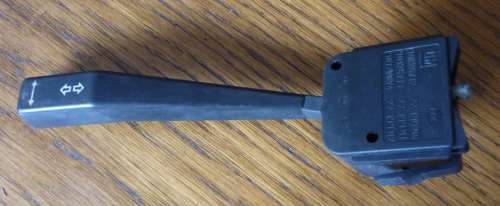At the time, when I could still repair my car myself, I could recognize the condition of the car by the sound of the blinker relay. This click-clack was caused by an electromagnetic switching process. The relay is a mechanical component that wears out and changes its sound as the vehicle ages. The relay resinifies, the clacking becomes harder.
Fast blinker rhythm = one blinker lamp defective
Extremely slow blinker rhythm = battery low
Today’s cars have replaced the fragile mechanical relay with more reliable, purely electronic circuits that do not produce sound by themselves. Obviously, however, this click-clack is so deeply anchored in our collective memory that we miss it. Consequently, modern product design simulates these familiar sounds.
For me as a trained listener, the existing simulation solutions are unsatisfactory. The difference to the relay is that the old relay, despite the uniformly repeating mechanical switching process, sounds slightly different with every click-clack and thus appears alive. These micro-variations are lost in the simulation. In addition, the sound does not age together with the age of the component, so it no longer provides any information about the condition of the car.
The simulated blinker sound still gives us the acoustic feedback that the blinker is set. But the multidimensionality of the sound information is lost.
Usually you hear the turn signal at moments when you need less attention and it is therefore a good idea to draw attention to things that do not require the immediate reaction of the driver. For example, a certain blinker rhythm could indicate a low oil level or a defective headlight.
Or is it not?


